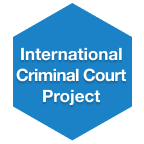Libya
Overview
phase: Situations & Cases
The Situation in Libya involves mass violence that occurred throughout Libya’s six month popular uprising in 2011. Colonel Muammar Mohammed Abu Minyar Gaddafi, who ruled Libya since 1969, instituted a legal and political regime, which allowed him to rule with absolute power. Initial protests in Libya began on February 15, 2011, when thousands of demonstrators gathered in front of the police headquarters in Benghazi to protest the arrest of two Libyan lawyers and human rights activists. Libyan security forces allegedly openly fired into the crowd, killing many civilians. In the following weeks, Libyan security forces allegedly carried out a systematic attack against the civilian population, killing, injuring, arresting, and disappearing hundreds of civilians perceived as dissidents, including citizens of Egypt and Tunisia. The attacks followed the same pattern in multiple locations, but were especially prominent in Benghazi and Misrata. There is evidence that 500-700 people were killed in the initial February 2011 shootings, and that thousands died over the course of the conflict. The United Nations (UN) estimates that hundreds of thousands of people have been displaced by the conflict in Libya.
Libya is not a State Party to the Rome Statute. On February 26, 2011, the United Nations Security Council unanimously referred the situation in Libya on February 26, 2011 to the International Criminal Court (ICC) for investigation through Resolution 1970. Following a preliminary examination, the Office of the Prosecutor of the ICC officially opened an investigation on March 3, 2011. Within the Situation in Libya, there is one case: The Prosecutor v. Saif Al-Islam Gaddafi.
For more information on the Situation in Libya, please visit the ICC page.


